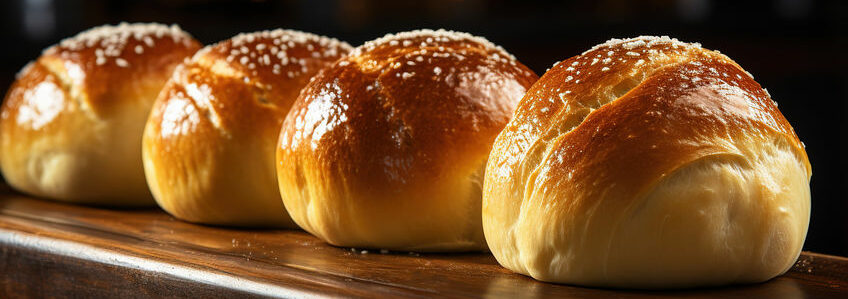
As a commercial baker, you understand the intricate dance of ingredients that culminate in the perfect loaf of bread. One often overlooked but crucial element in this process is the proper heating of milk. Join us as we delve into the technical aspects of why heating milk is essential for optimal yeast activity and overall dough performance, providing you with the insights needed to elevate your baking to new heights.
The Role of Milk in Dough
Milk is a common ingredient in many baked goods, from tender rolls to robust loaves. Its functions in dough are multifaceted, contributing to the texture, flavor, and nutritional value of the final product. However, how milk is treated before it is added to the dough can significantly impact these attributes, particularly concerning yeast activity and gluten development.
Why Heating Milk Matters
Yeast Activation and Fermentation
Yeast, the microscopic powerhouse behind dough leavening, thrives in a carefully balanced environment. When milk is not adequately heated, it can interfere with yeast activation due to the presence of certain enzymes and proteins. Specifically, enzymes like lactoperoxidase and proteins such as lactoglobulin and lactalbumin, when left intact, can inhibit yeast activity. This inhibition leads to poor dough rise and texture, as the yeast cannot ferment the sugars in the dough effectively.
Heating milk to around 110 to 115 degrees Fahrenheit is a critical step to deactivate these inhibitors. This temperature range ensures that the milk is warm enough to neutralize the enzymes without scorching, which would alter the milk’s flavor and negatively affect the dough.
Gluten Development
In addition to aiding yeast activity, heating milk plays a vital role in gluten development. Gluten, the network of proteins that gives bread its structure, can be adversely affected by the proteins in unheated milk. When milk is heated, the denaturation of whey proteins like lactoglobulin and lactalbumin occurs. This denaturation process prevents these proteins from interfering with gluten formation, leading to a more robust and elastic dough.
Benefits of Properly Heated Milk
- Consistent Yeast Fermentation: Properly heated milk ensures that yeast can ferment sugars efficiently, resulting in a more consistent rise and crumb structure. This consistency is key to producing bread with the desired texture and volume.
- Enhanced Dough Performance: By deactivating protein inhibitors, heated milk allows for better gluten development. This results in a dough that is easier to handle, shape, and proof, ultimately improving the final product’s texture.
- Improved Flavor: Even fermentation and optimal gluten development contribute to a more balanced flavor profile. The sugars in heated milk dissolve more readily, providing a steady food source for yeast, leading to more nuanced flavors in the finished bread.
- Better Interaction with Ingredients: Heated milk primes it for better interaction with other dough ingredients, creating a harmonious blend that supports overall dough structure and quality.
Practical Tips for Heating Milk
To achieve the best results, follow these practical tips for heating milk:
- Use a Thermometer: Heating milk to the precise range of 110 to 115 degrees Fahrenheit is crucial. Use a kitchen thermometer to ensure accuracy and avoid overheating.
- Gentle Heating: Heat the milk slowly and gently, stirring occasionally to prevent scorching. Rapid heating can cause uneven temperatures and potential scorching, affecting both flavor and texture.
- Consistency is Key: Make heating milk a consistent part of your baking routine. The slight additional effort pays off significantly in the quality and consistency of your baked goods.
Watch the Wisdom Wednesday here:
Incorporating properly heated milk into your baking process is a small yet impactful step that can vastly improve the quality of your bread. Ensuring optimal yeast activation and gluten development sets the stage for a perfect baking performance every time. Take the time to heat your milk correctly, and enjoy the enhanced rise, texture, and flavor in your top-quality baked goods. Happy baking, and may your loaves always rise to the occasion!
Want to stay up-to-date with BAKERpedia? Sign up for our newsletter today!

